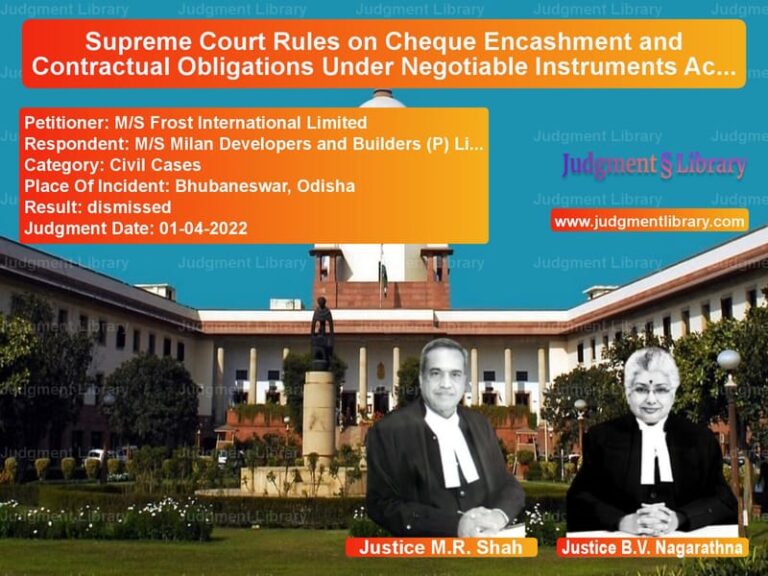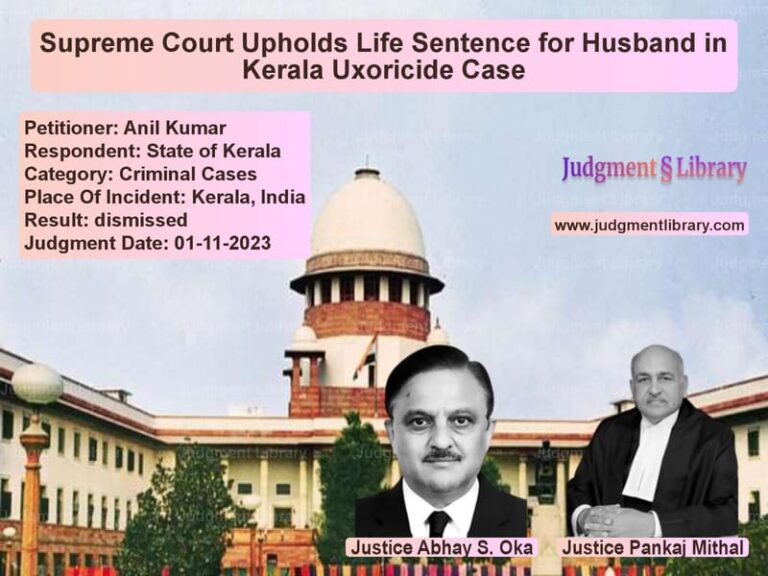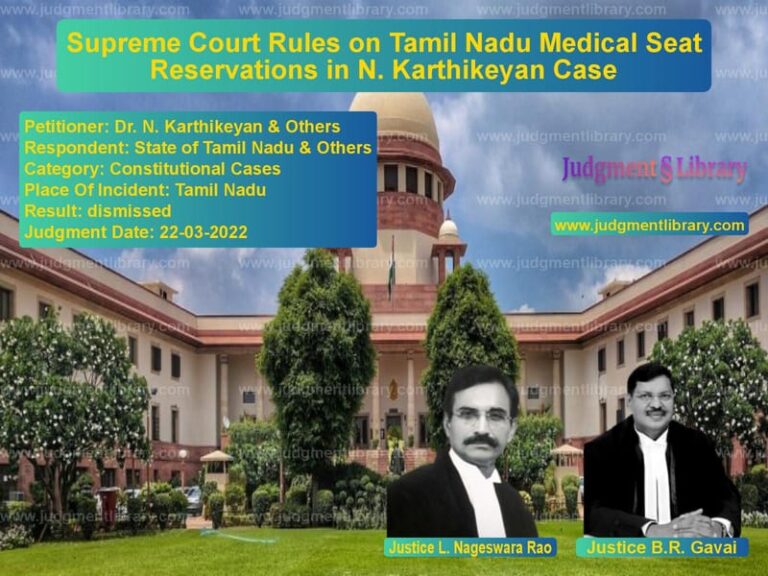Supreme Court Imposes Restrictions on Limestone Mining Near Chittorgarh Fort
The Supreme Court of India has issued a significant ruling concerning limestone mining near the historic Chittorgarh Fort. The Court’s decision restricts mining operations within a five-kilometer radius of the fort and mandates an expert study to evaluate the impact of mining activities on the fort’s structural integrity. The case, filed as a public interest litigation (PIL), raises crucial concerns about balancing economic development with heritage preservation.
Background of the Case
The case originated from a PIL filed by Thakur Umed Singh Rathore in 1999, challenging the extensive limestone mining operations near Chittorgarh Fort. The petition raised concerns about the potential damage caused by blasting and other mining activities on the ancient fort, a UNESCO World Heritage Site known for its historical and cultural significance.
Chittorgarh Fort, which dates back to the Mauryan period, has been a symbol of Rajput valor and has withstood multiple invasions. However, urbanization, increased tourism, and mining operations in the vicinity have raised concerns about its preservation.
The primary respondent in the case was Birla Corporation Limited, which operates extensive limestone mining leases in the area. The company, along with other mining leaseholders, faced allegations of causing structural damage to the fort through uncontrolled blasting operations.
Petitioners’ Arguments
The petitioners argued that:
- Continuous mining and blasting in the region generate vibrations that threaten the fort’s structural stability.
- Unregulated mining has resulted in cracks in important structures, including Vijay Stambha, Kirti Stambha, and Kumbha Mahal.
- The government and mining companies have ignored the principles of sustainable development and heritage conservation.
- The Supreme Court should enforce stricter regulations to protect the fort from further deterioration.
Respondents’ Arguments
Birla Corporation and other mining leaseholders countered that:
- Their mining operations adhere to existing regulations and safety standards.
- There is no direct scientific evidence linking mining activities to structural damage in the fort.
- The limestone deposits in the region are of significant economic value and contribute to the state’s revenue.
- They are willing to comply with reasonable restrictions and additional studies to assess environmental impact.
Supreme Court’s Ruling
The Supreme Court, after examining expert reports, issued the following key directives:
- A blanket ban on all blasting and mining activities within a five-kilometer radius of Chittorgarh Fort.
- Formation of an expert committee to conduct a detailed environmental and structural impact assessment of mining operations beyond the restricted zone.
- Continuous monitoring of the peak particle velocity (PPV) of blasting-induced vibrations to ensure that they remain within permissible limits.
- Strict compliance with the Solid Waste Management Rules, 2016, to reduce environmental pollution caused by mining operations.
- Regulation of tourism-related activities to prevent human-induced damage to the fort’s structures.
The Court emphasized:
“Notwithstanding any liberal recommendation on undertaking blasting operations nearer to the Chittorgarh Fort, keeping in perspective the continuous exposure of ancient monuments to peak particle velocity (PPV) arising from blasting, a radius of five kilometers from the compound wall of the Fort shall not be subjected to mining by blasting or use of explosives for mining of any minerals.”
Impact and Significance of the Judgment
The Supreme Court’s ruling sets a precedent for balancing industrial activities with heritage conservation. Key takeaways include:
- Establishment of a legal framework for protecting historic monuments from industrial encroachment.
- Recognition of sustainable development principles, ensuring economic activities do not compromise cultural heritage.
- Encouragement of corporate accountability, requiring companies to adopt environmentally friendly mining technologies.
- Potential implications for similar cases involving mining near historical sites across India.
Conclusion
The Supreme Court’s decision is a landmark step in protecting India’s rich cultural heritage. By enforcing strict mining restrictions and mandating expert evaluations, the Court has reinforced the need for responsible economic development. The ruling serves as a reminder that heritage conservation and industrial growth must go hand in hand, ensuring that future generations inherit both economic prosperity and a well-preserved historical legacy.
Petitioner Name: Thakur Umed Singh Rathore.Respondent Name: Union of India & Others.Judgment By: Justice Sanjiv Khanna, Justice S.V.N. Bhatti.Place Of Incident: Chittorgarh, Rajasthan.Judgment Date: 12-01-2024.
Don’t miss out on the full details! Download the complete judgment in PDF format below and gain valuable insights instantly!
Download Judgment: thakur-umed-singh-ra-vs-union-of-india-&-oth-supreme-court-of-india-judgment-dated-12-01-2024.pdf
Directly Download Judgment: Directly download this Judgment
See all petitions in Environmental Cases
See all petitions in Dispute Resolution Mechanisms
See all petitions in Enforcement of Awards
See all petitions in Judgment by Sanjiv Khanna
See all petitions in Judgment by S.V.N. Bhatti
See all petitions in allowed
See all petitions in Quashed
See all petitions in supreme court of India judgments January 2024
See all petitions in 2024 judgments
See all posts in Environmental Cases Category
See all allowed petitions in Environmental Cases Category
See all Dismissed petitions in Environmental Cases Category
See all partially allowed petitions in Environmental Cases Category







